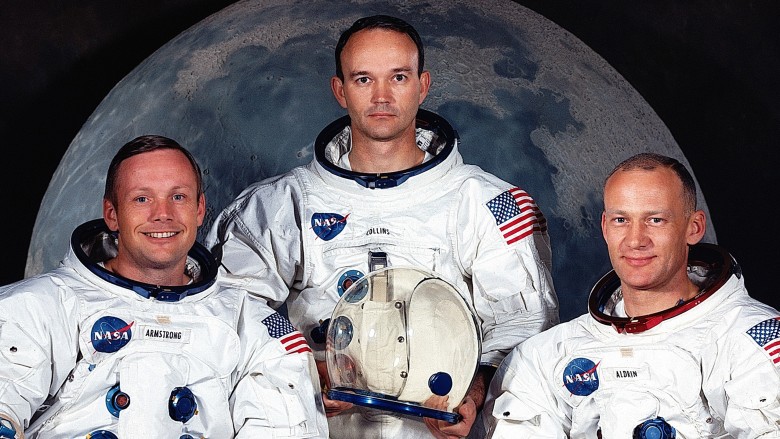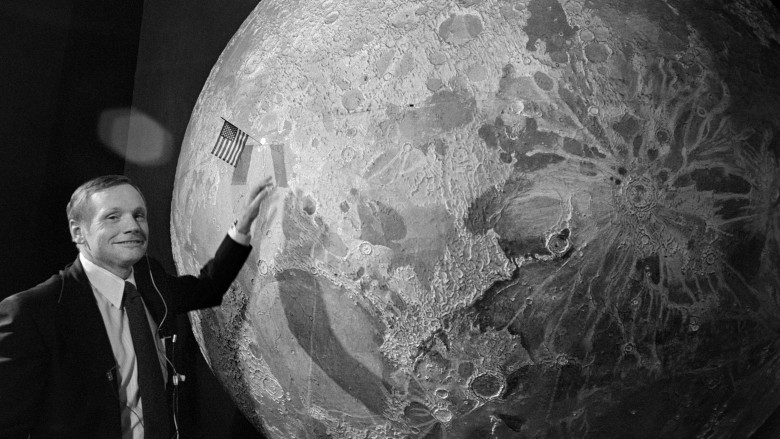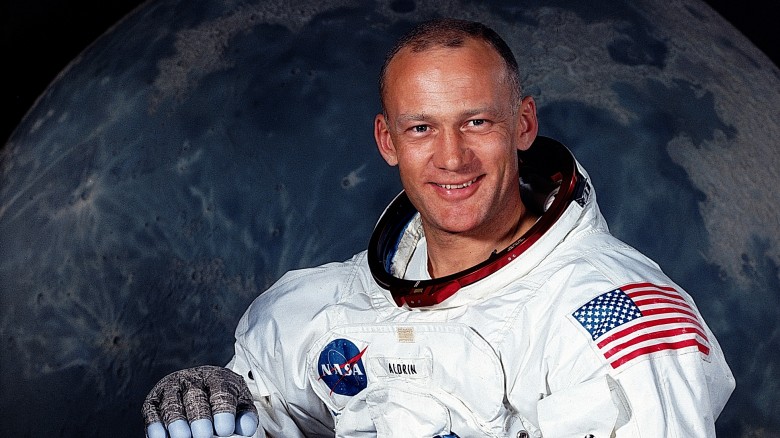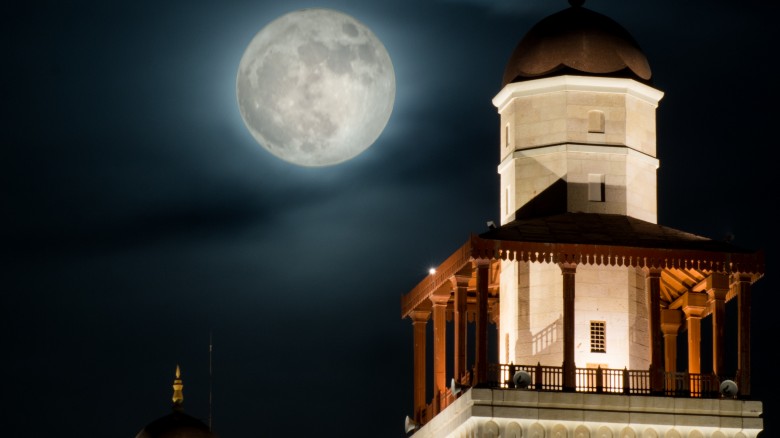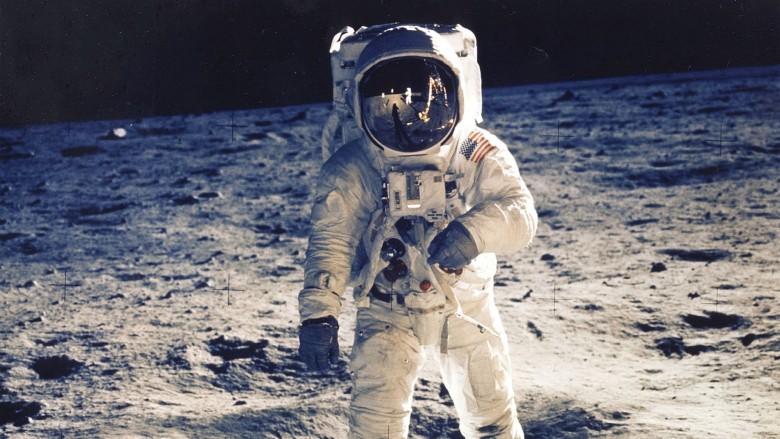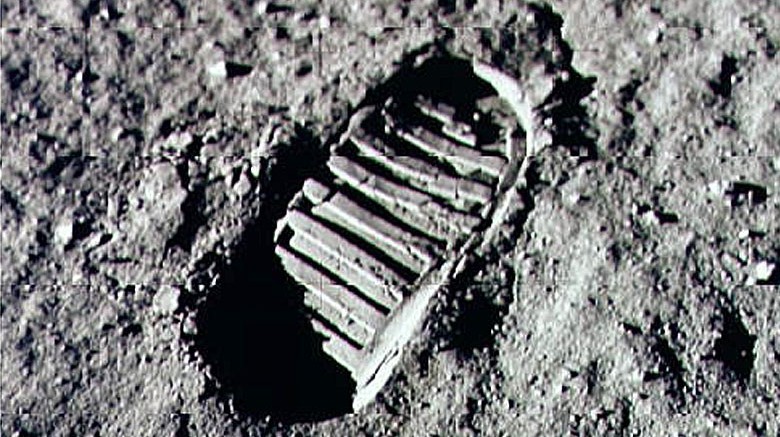False Facts About The Moon Landing You Always Thought Were True
It's not an understatement to say that landing human beings on the Moon and returning them to Earth not-dead is among humankind's greatest achievements. Yet, in the 40+ years since Apollo 11 touched down on the lunar surface, many myths have sprung up about the Moon landing. One might even call them "alternate facts," and we're here to give you the "real facts."
The Apollo program and Moon landing were extremely popular
The fact that NASA's lunar program received only middling support from the American public in the 1960s may seem puzzling to modern readers. As strange as it seems today, according to polls, most Americans in the 1960s thought the Apollo program wasn't worth the cost. The highest approval that the Apollo program received was 53%, after Apollo 11 touched down on the Moon in 1969.
Yet, as more time passes, more and more Americans view the Moon landing as "worth it." In 2009, on the landing's fortieth anniversary, CBS found that 71% of American thought that the trip to the Moon was worth the money spent on it. Only 66% of Americans felt the same way in 1994, and 47% in 1979. Probably because the way things are going lately, more and more people want to move there.
Neil Armstrong's quote was preplanned
"That's one small step for man, one giant leap for mankind," is one of the most recognized and cited quotes in human history. According to Neil Armstrong, he didn't formulate what he was going to say until after the lunar module, Eagle, landed on the surface of the Moon. He was too busy, you know, landing on the Moon to think of anything cute to utter once he got there.
Yet some believe that Neil Armstrong's famous line was fed to him by NASA. There is no evidence for this. In addition, decades later, Neil's brother, Dean, claimed that his famous astronaut sibling had slipped him a note with the phrase on it months before the Apollo 11 mission. Neil apparently wanted to see what Dean thought of it. Some historians doubt Dean's recollection of events. Neil Armstrong, just as he said, most likely came up with the line while sitting in the lunar lander on the surface of the Moon in 1969.
There is evidence, however, that Armstrong flubbed his line. He meant to say "one small step for a man," but he left out the article. This is why you rehearse, kids.
"Good luck, Mr. Gorsky"
Allegedly, before leaving the Moon, astronaut Neil Armstrong uttered the phrase, "Good luck, Mr Gorsky." The story goes that this enigmatic phrase is said to be an inside joke, based on an occurrence during Armstrong's childhood. When Armstrong was a kid, he overheard an argument between his neighbors, Mr. and Mrs. Gorsky. The wife apparently promised the husband a sexual favor he requested, but only if the kid next door — meaning Armstrong — ever landed on the moon. Thus, Armstrong was wishing Mr. Gorsky luck that his wife would go through with the bet.
It's an entertainingly ribald yarn, but the fact is that Armstrong never said this. So where did this tall tale originate? Most likely it was joke made by the late comedian, Buddy Hackett. And you thought people were bad at taking jokes today.
Armstrong was the first man on the moon because he was a civilian
Why did NASA choose Neil Armstrong, and not his fellow astronaut Buzz Aldrin, to be the first human on the Moon? Some speculated at the time that NASA chose Armstrong because he was a civilian. Armstrong had flown missions during the Korean War but, unlike Buzz Aldrin, he was no longer active-duty. The idea behind this theory was that a civilian stepping out on the Moon would show the world that America's space program was not a mere military endeavor, but rather something for all mankind.
In reality, NASA chose Armstrong for other, more boring reasons. For one, Armstrong held seniority as an astronaut and was Apollo 11's mission commander. Old leader gets the glory. Second, the lunar module simply opened in such a way that the commander — Armstrong — had to get out first before the pilot — Adrin — could follow. The only way for Aldrin to have gone first was for the two men to move around inside the small module like a guy maneuvering through a crowded movie theater to go to the bathroom. They actually attempted it during testing on Earth, but managed to damage some of the module's equipment, so they didn't bother. That's for the best — if you ever get to go to the Moon, try not to break anything either.
The American flag is flapping in the breeze
The Moon doesn't have an atmosphere that could facilitate wind. So why does the American flag appear to wave in the breeze in the videos of the Apollo 11 astronauts planting it? There are a couple reasons for this, and none of them are "they filmed it in a studio."
For one, NASA actually promoted this illusion when it designed the flagpole. They made the flag extra-stuff so it would stay up horizontally. After all, why plant Old Glory on the Moon if it unimpressively rest limply on the pole? Also, some of the "waving" was caused by the inertia of the astronauts moving it into place. Apparently the flag was troublesome to set up, which added to this effect. Oh, and their efforts were somewhat in vain, because the Eagle lunar module knocked the flag over during take-off. One giant oopsie for mankind.
Neil Armstrong converted to Islam on the Moon
How do some of these myths even get started? Like this one — some seriously believe that Neil Armstrong heard the Muslim call to prayer, the Azan, on the Moon. Those prayers must have been quite loud, since the Moon is essentially in a vacuum that doesn't conduct sound.
At any rate, the story goes that Armstrong converted to Islam after returning to Earth, and kept quiet about it. As outlandish as this rumor may seem, there's a surprising amount of information on the internet about it. The rumors have only grown, due to Armstrong being a relatively private person who rarely gave interviews. He never had his own video game like Buzz Aldrin. And apparently, love of privacy = so, so much to hide.
There's nothing wrong with being Muslim, and Armstrong would be no less a hero if he had converted. The simple fact is that the rumor is untrue. The U.S. State Department even set up interviews between Armstrong and journalists in the Middle East to refute the rumor. Still no video game deal though. Shame.
It was FAKE
A 2013 poll by the firm Public Policy Polling found that 7% of Americans surveyed thought the moon landing was faked. This is a small number, but it's still 7% too high.
One piece of "evidence" that hoax proponents often use to backup their claims is that that there are no stars in any of the Apollo 11 photographs. NASA must have filmed the lunar landing elsewhere then, right? Perhaps on a soundstage in Burbank, California? In reality, there are no visible stars because of the camera's fast exposure settings. The stars simply don't give off enough light compared to closer objects for the camera to pick them up. But to learn that would involve going to photography class, AKA education, AKA something most of these fake-landing theorists have no interest in.
We can't see the Apollo 11 landing site
Fake-landing conspiracy theorists also point to how we cannot find the Moon landing sites. Parts of the lunar modules, flags, and other debris from the six successful landings should still be there. Why, then, can't we see any of them via the Hubble Space Telescope?
The simple answer is that the lunar sites are just too small for Hubble to pick them up with any clarity. Scientists use Hubble to look at large, planet-sized objects, not small details on the Moon's surface. But good luck telling any of them that.
Luckily, we did get a decent view of the Apollo 11 site in the Sea of Tranquility in 2012, when NASA's Lunar Reconnaissance Orbiter took photographs. Its pictures showed the remnants of the Eagle lunar module, experiments that Armstrong and Aldrin conducted, and even the astronaut's footprints. No way would Hollywood keep their studio sets intact for that long.

